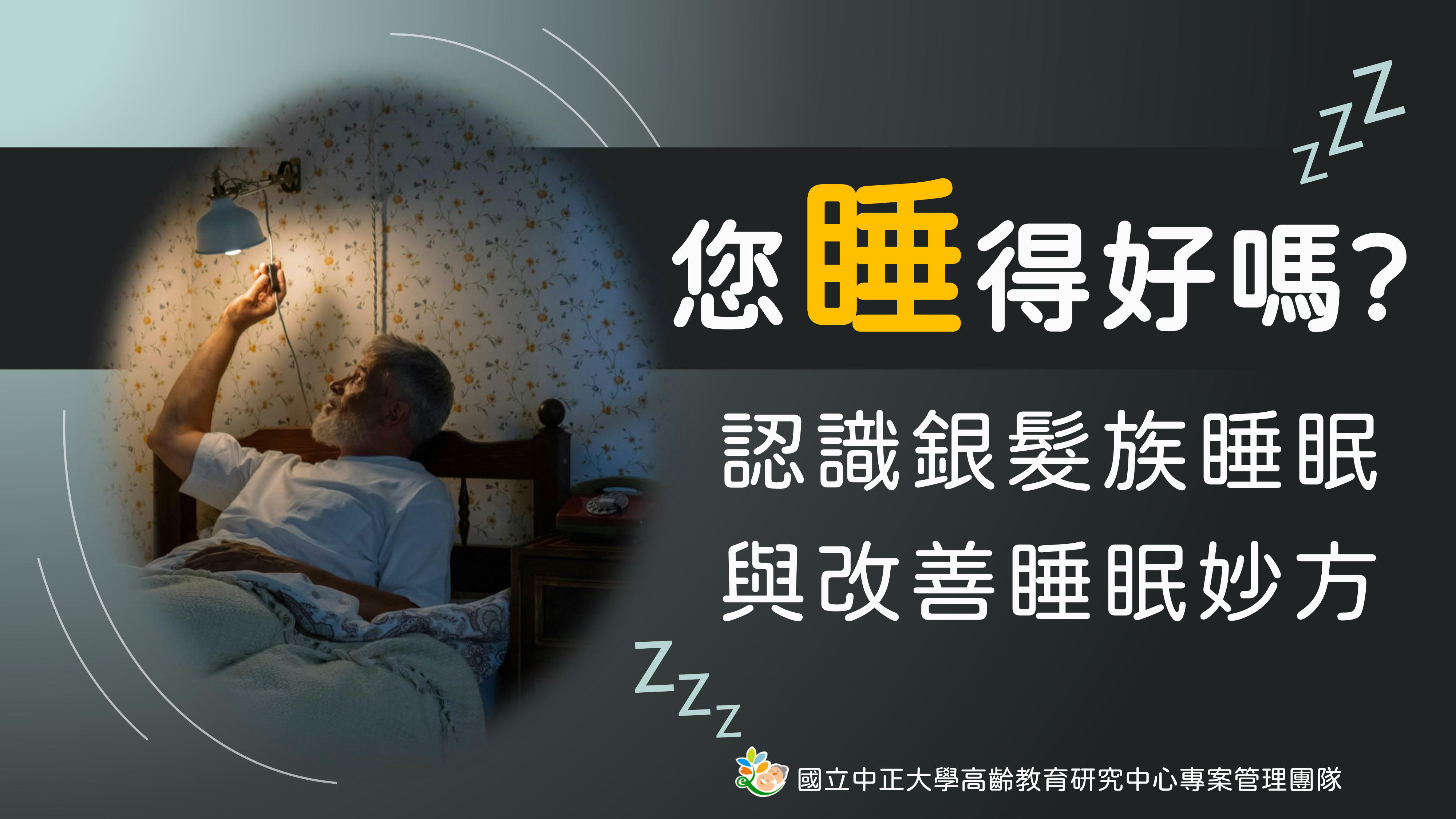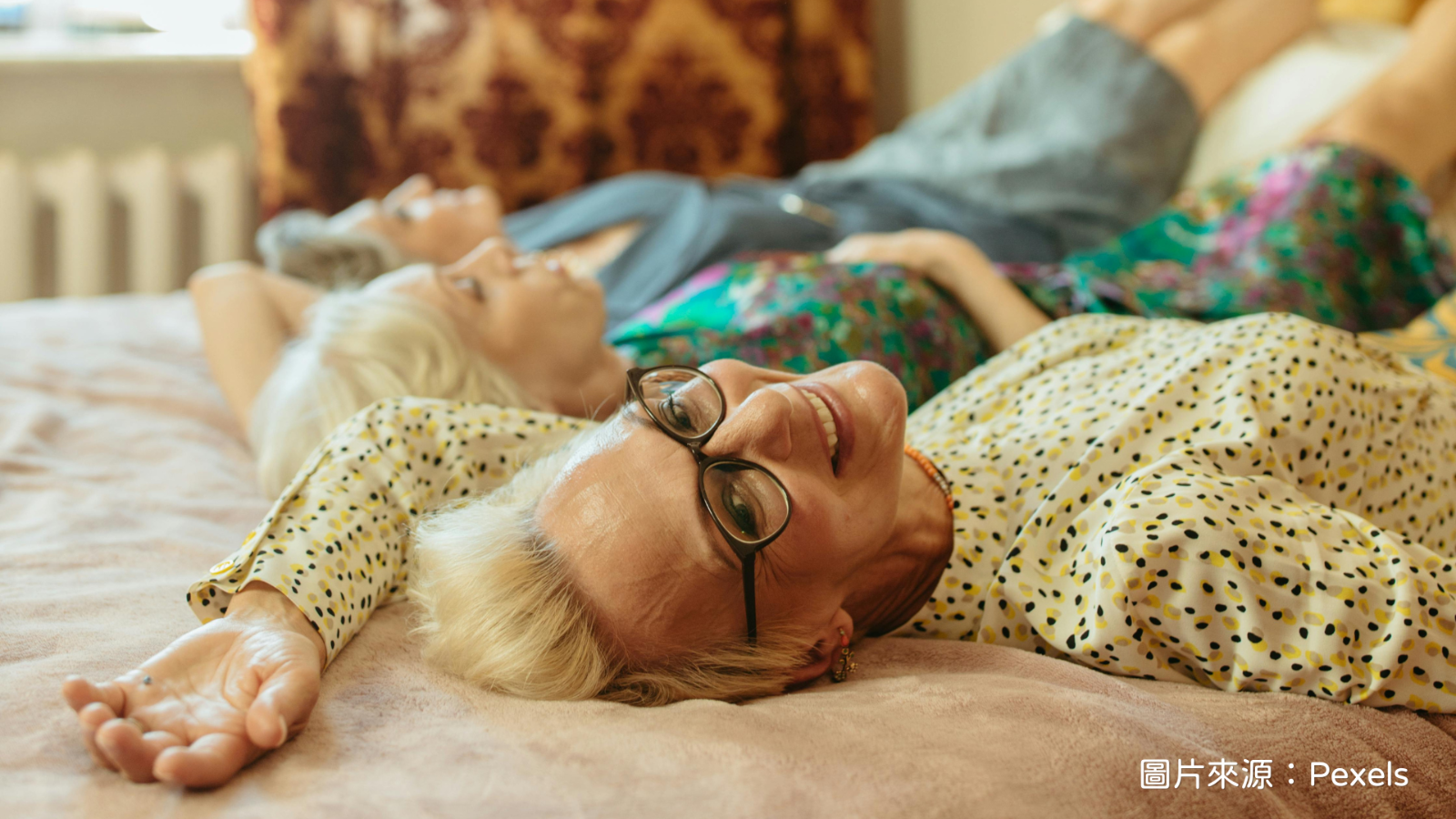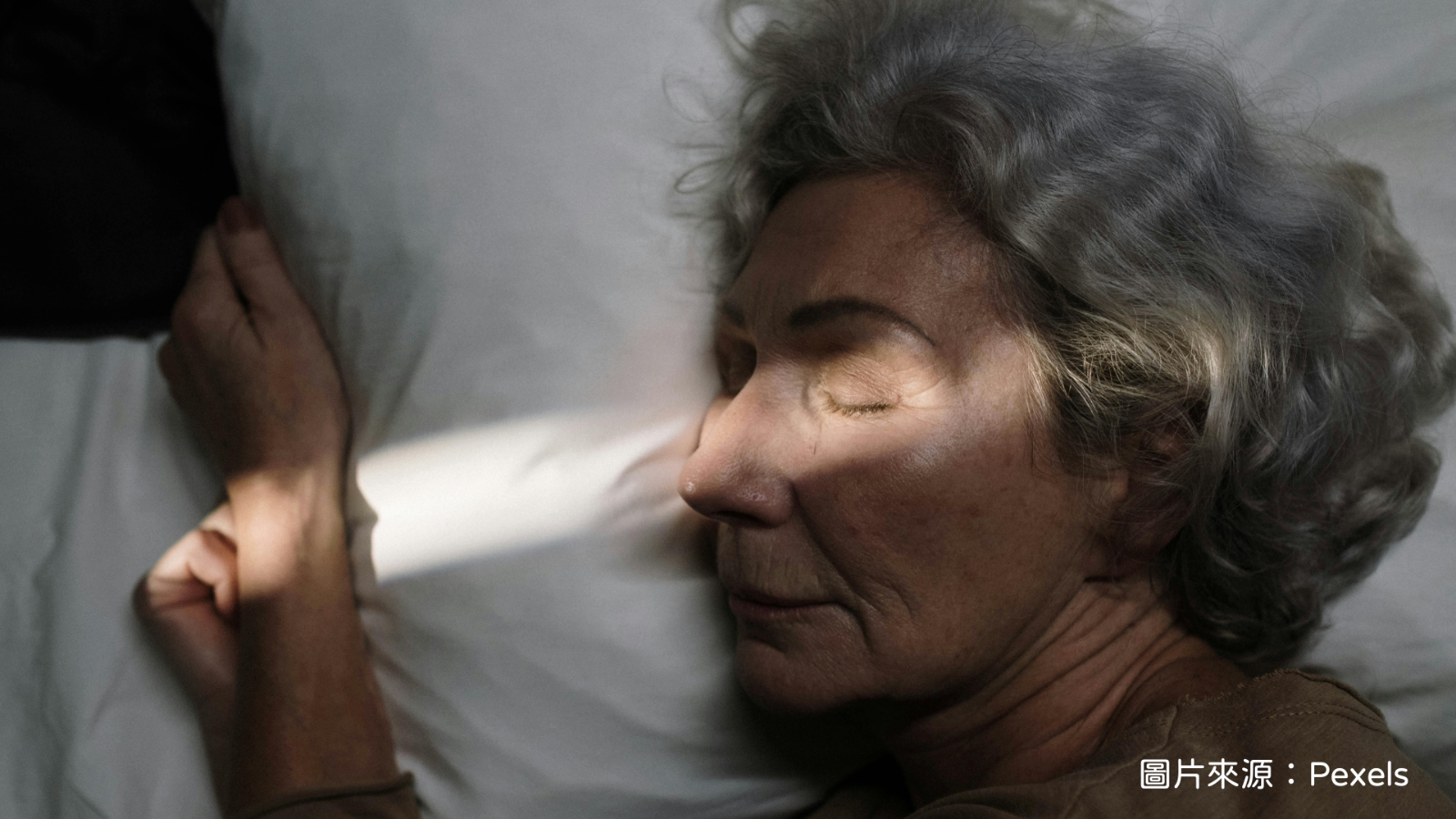
Did you sleep well? According to the Taiwan Sleep Medicine Association's decennial survey, the proportion of insomnia among the elderly in Taiwan has been on the rise in recent years. While the overall insomnia rate in Taiwan is about 11.3%, as many as 22.7% of people aged 60 to 69 suffer from chronic insomnia.
Why is the insomnia rate so high among the silver-haired generation? Besides sleeping pills, what are some methods to promote better sleep? Let’s explore recent academic research that offers some insights!
Sleep in the silver-haired generation: How is it different from when they were younger?
Sleep patterns undergo many changes from birth to old age. As people age, even if they are physically healthy, their sleep patterns may still differ from when they were younger. These changes include: feeling sleepy earlier, shorter sleep duration at night, more frequent awakenings during the night, reduced deep sleep, and increased daytime napping. However, most studies show that older adults can fall asleep as quickly as younger people. These changes are a normal part of the aging process, and if they do not affect daily life, there is usually no need to worry too much.
Why do these changes occur? It’s primarily because, during aging, the body's ability to regulate its circadian rhythm may gradually decline, and the secretion of certain hormones, such as growth hormone, cortisol, and melatonin, may change. These physiological changes result in sleep patterns differing from those of younger years. Additionally, lifestyle changes in old age, such as reduced physical activity and less regular routines, may also affect sleep.

What counts as insomnia? Why does it happen?
According to the DSM-5 Diagnostic and Statistical Manual of Mental Disorders, chronic insomnia is diagnosed when symptoms such as difficulty falling asleep, maintaining sleep, or waking up too early occur at least three times a week and cause significant daytime distress and impairment for at least three months. If you are experiencing these symptoms, it is important to seek help from a professional.
As for why insomnia occurs, American scholar Spielman proposed three factors that explain why some people experience long-term insomnia while others do not:
Factor 1: Predisposing factors to insomnia
Some people have inherent physiological or psychological factors that make them more prone to insomnia, such as being more anxious, sensitive to external stimuli, or having a fragile circadian rhythm. However, having these traits does not necessarily mean that one will develop insomnia.
Factor 2: Precipitating factors of insomnia
These are the direct triggers of insomnia, including stress, physical or psychological illness, or medications that affect sleep. These factors may lead to acute insomnia, but they do not cause long-term sleep disturbances. The real cause of chronic insomnia is Factor 3.
Factor 3: Perpetuating factors of insomnia
Once sleep disturbances occur, unconscious thoughts or behaviors can worsen insomnia and make it persist. For example: spending too much time in bed, napping too much, excessively worrying about not sleeping well, or obsessing over sleep duration. Non-pharmacological psychological therapies usually target these perpetuating factors, and past studies have shown that they can be as effective as medication.
If you are experiencing sleep troubles, do you recognize any of these factors in yourself? Try making adjustments—you might find that it helps improve your sleep!

Tips for improving sleep: Beyond sleeping pills
For seniors experiencing sleep difficulties, in addition to taking sleeping pills, many studies have confirmed the effectiveness of non-pharmacological treatments, including cognitive behavioral therapy, acupuncture, exercise, and qigong. Combining both medication and non-medication treatments can achieve even better results.
In addition to formal treatment options, cultivating good lifestyle habits can also contribute to better sleep. These habits are an important part of non-pharmacological treatments for insomnia. They include: regular exercise and a balanced diet, avoiding caffeine, alcohol, and smoking, creating a suitable sleep environment (quiet and dark), limiting fluid intake before bedtime, and participating in daytime activities such as senior learning programs.
Finally, we remind readers that if insomnia is already causing significant disruptions to daily life and well-being, seeking professional help should be a priority.
◎Extended reading:
- 梁明皓、魏惠娟、郭書馨(2020)。樂齡學習者憂鬱傾向調查之研究。健康管理學刊,18(2),45–62。
- 台灣睡眠醫學學會(2017)。2017 台灣常見睡眠問題盛行率的變化趨勢:一個十年的橫斷性重覆調查。台灣睡眠醫學學會。(Open in a new window.)
- Kwon, C.-Y., Lee, B., Cheong, M. J., Kim, T.-H., Jang, B.-H., Chung, S. Y., & Kim, J. W.. (2021). Non-pharmacological Treatment for Elderly Individuals With Insomnia: A Systematic Review and Network Meta-Analysis. Frontiers in Psychiatry, 11.(Open in a new window.)
- Li, J., Vitiello, M. V., & Gooneratne, N.. (2018). Sleep in Normal Aging. Sleep medicine clinics, 13(1), 1–11.(Open in a new window.)
- Patel, D., Steinberg, J., & Patel, P.. (2018). Insomnia in the Elderly: A Review. Journal of Clinical Sleep Medicine : JCSM : Official Publication of the American Academy of Sleep Medicine, 14(6), 1017–1024.(Open in a new window.)
- Spielman, A. J., Caruso, L. S., & Glovinsky, P. B.. (1987). A Behavioral Perspective on Insomnia Treatment. Psychiatric Clinics of North America, 10(4), 541–553.(Open in a new window.)
- Suzuki, K., Miyamoto, M., & Hirata, K.. (2017). Sleep disorders in the elderly: Diagnosis and management. Journal of General and Family Medicine, 18(2), 61–71.(Open in a new window.)



